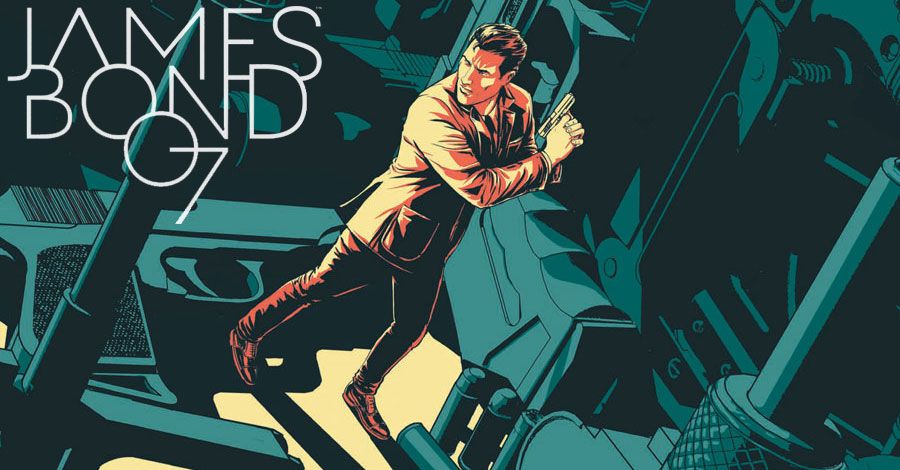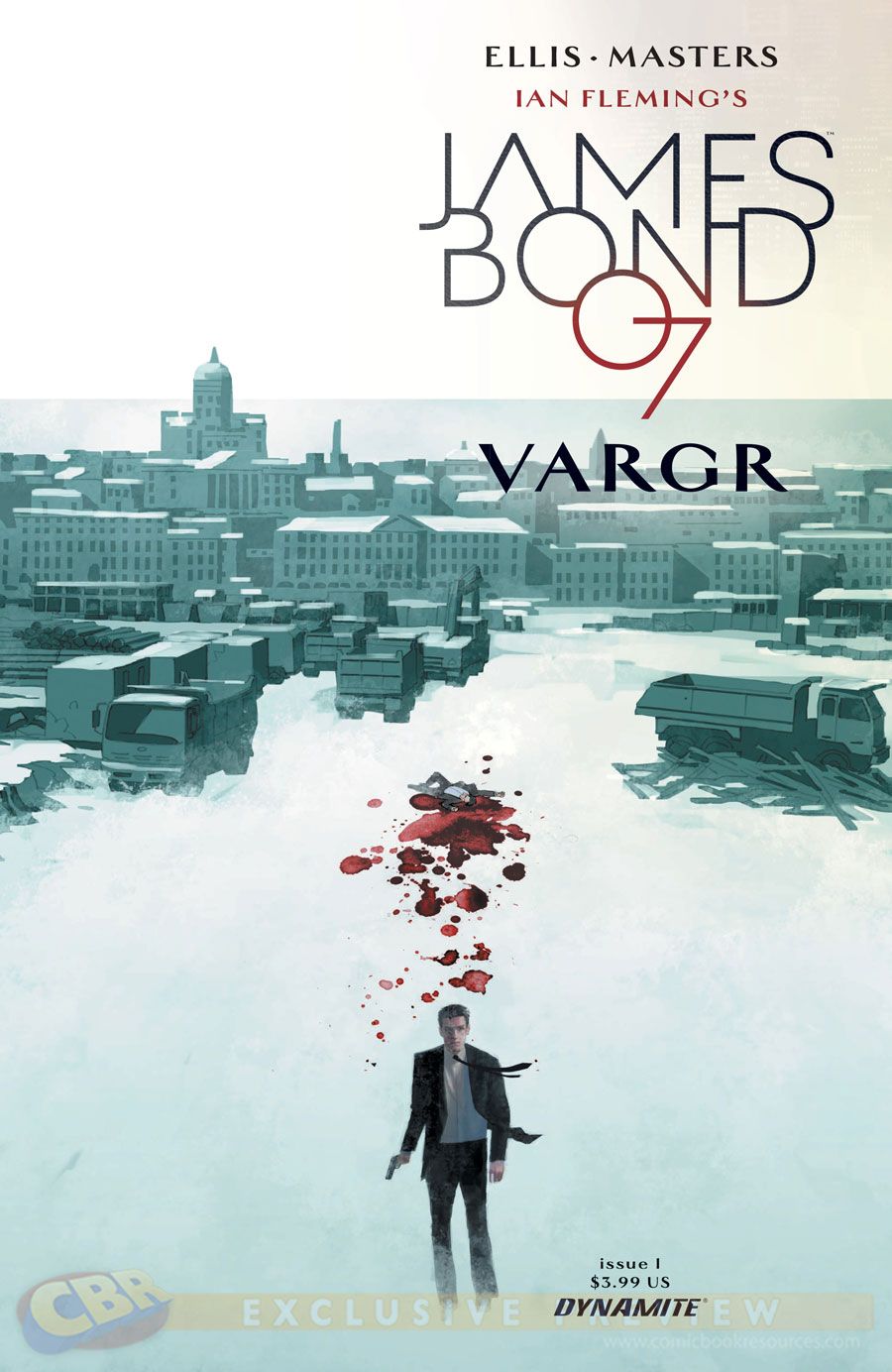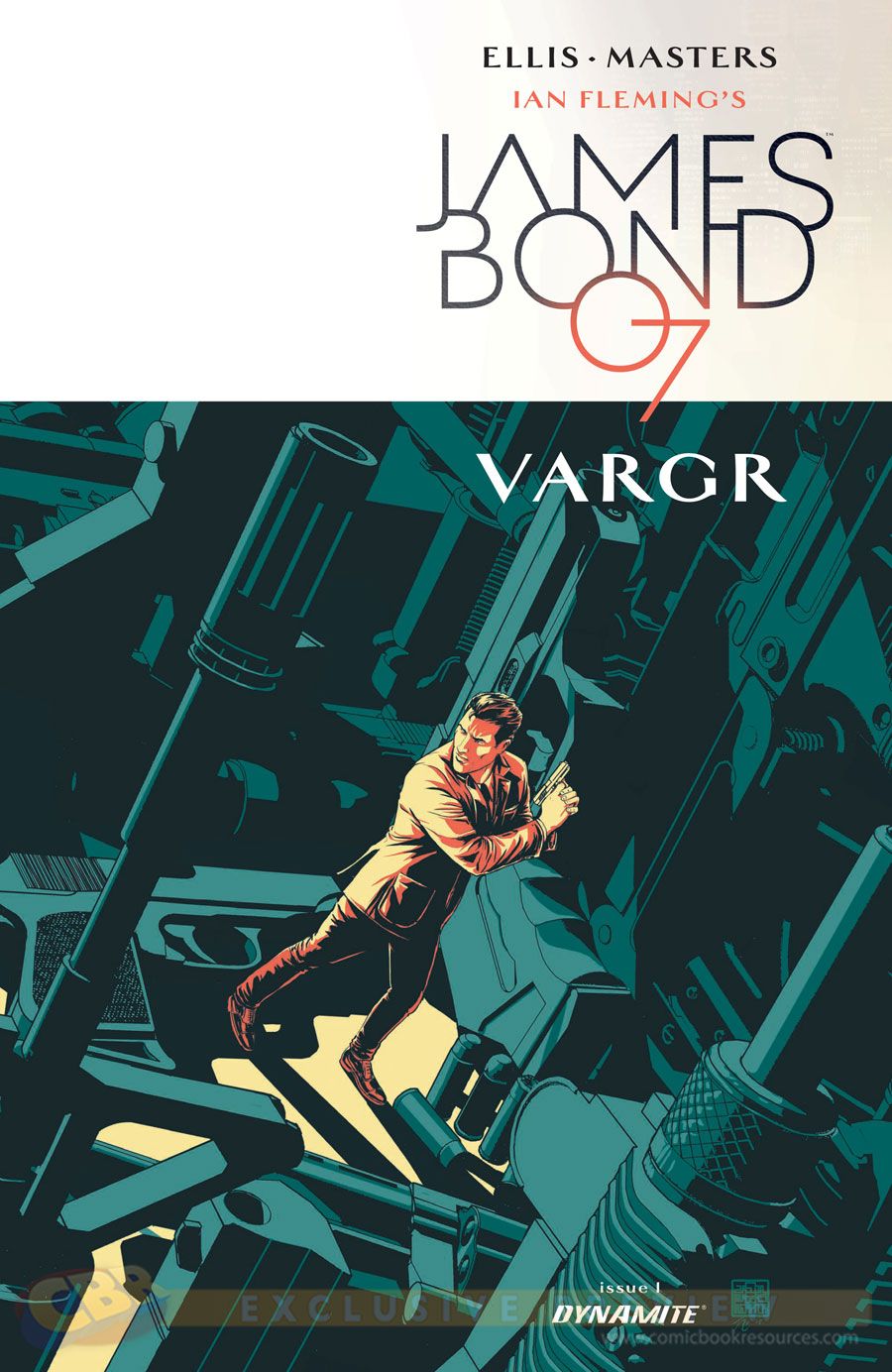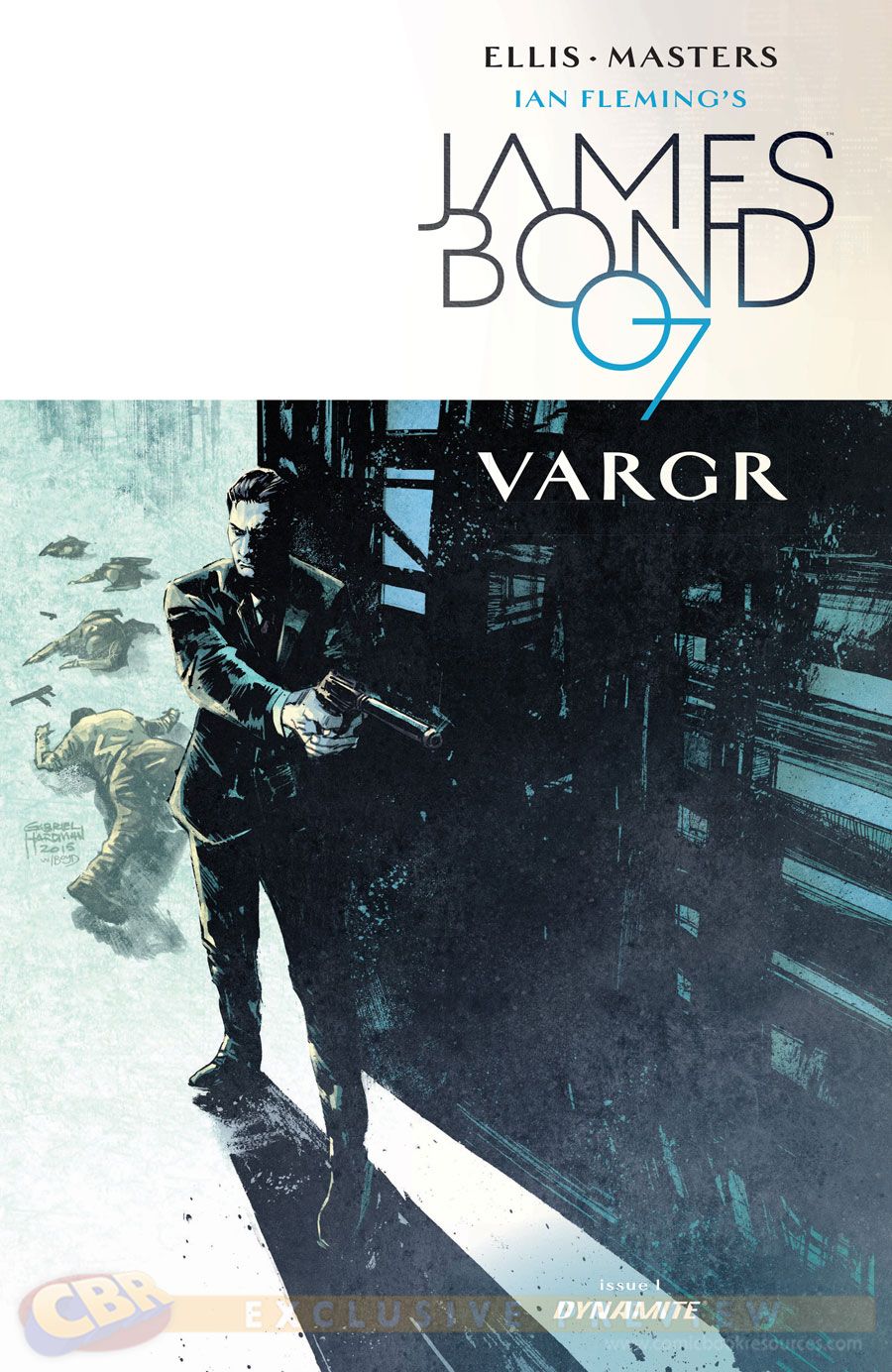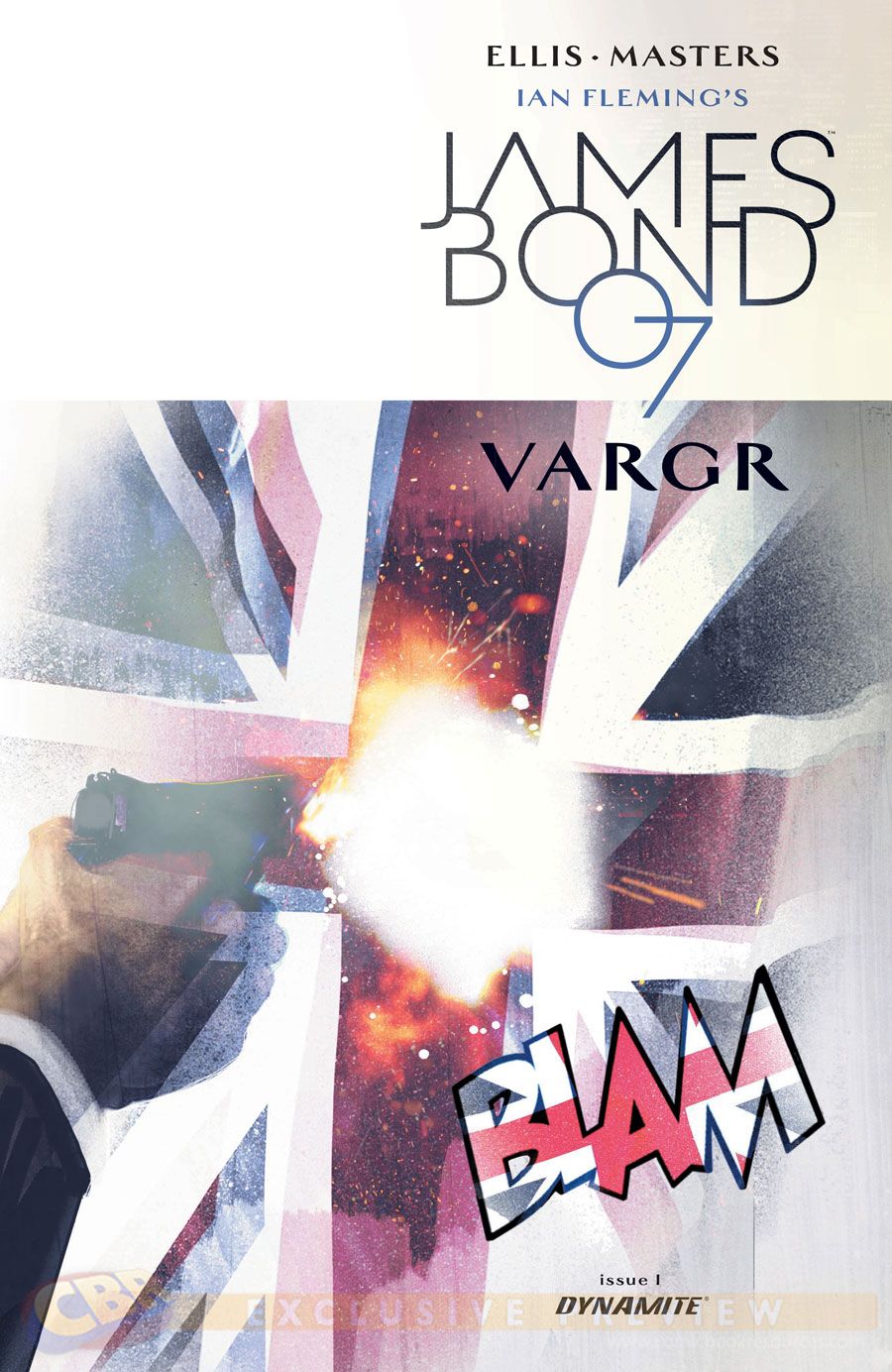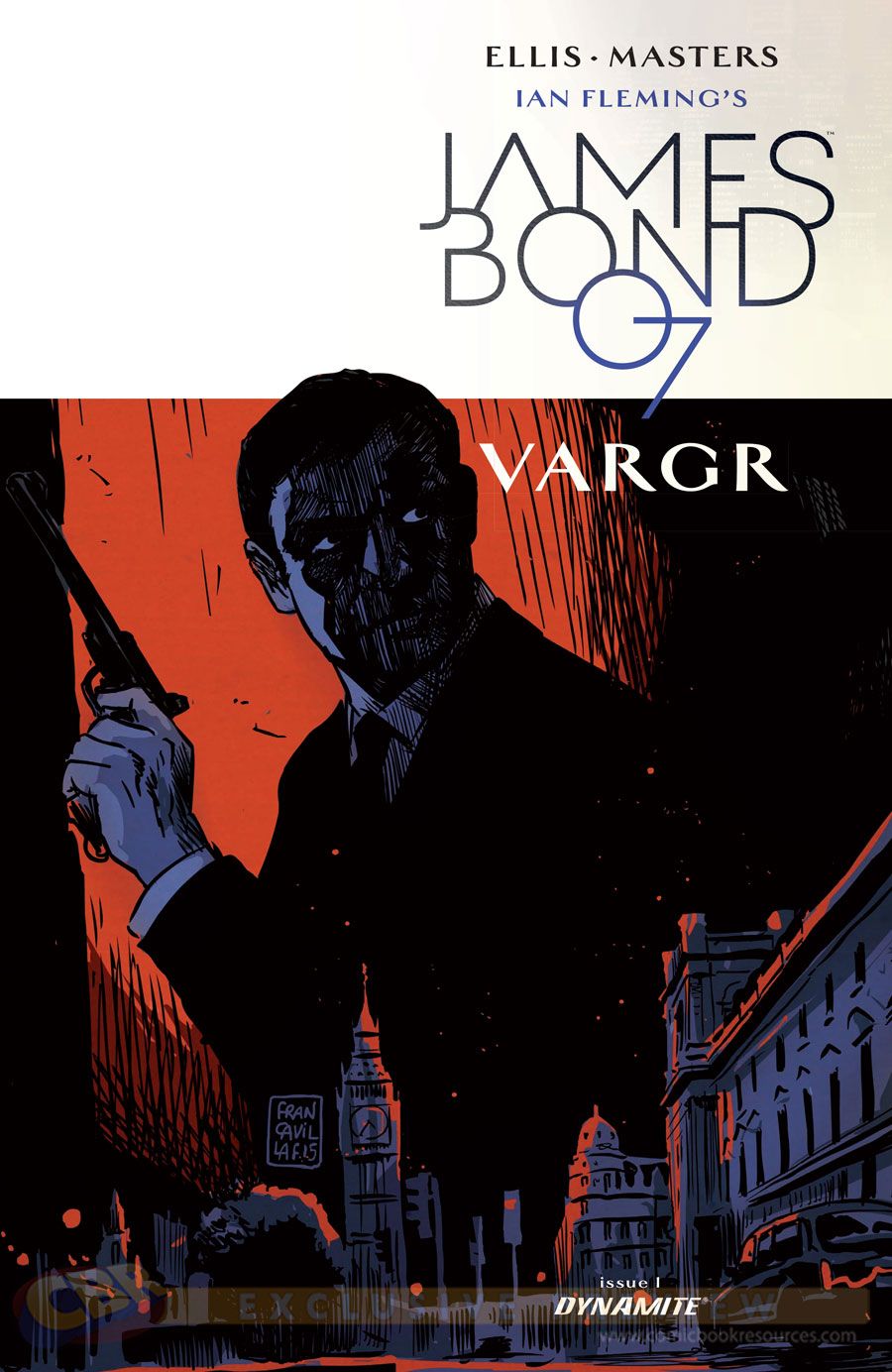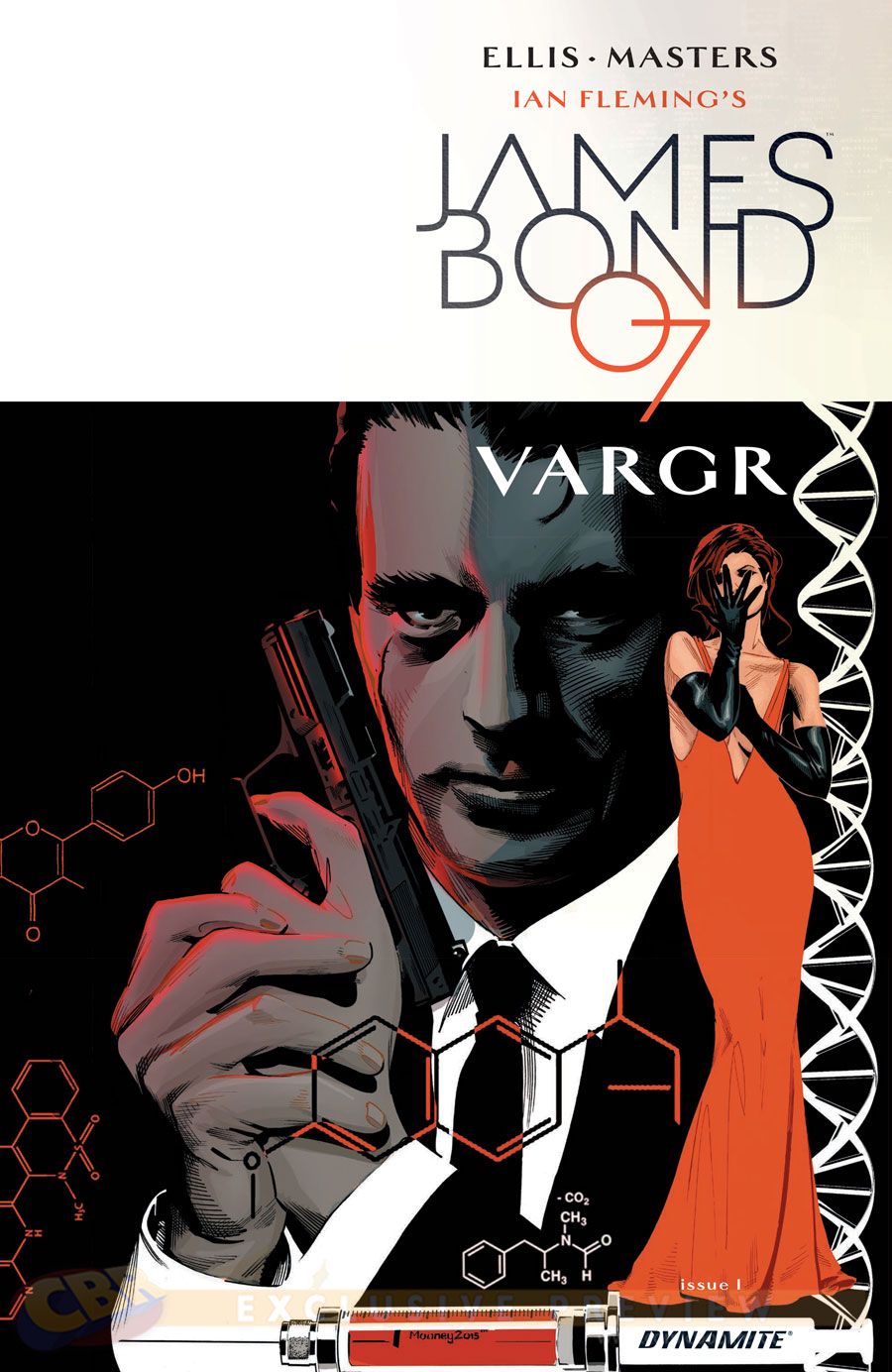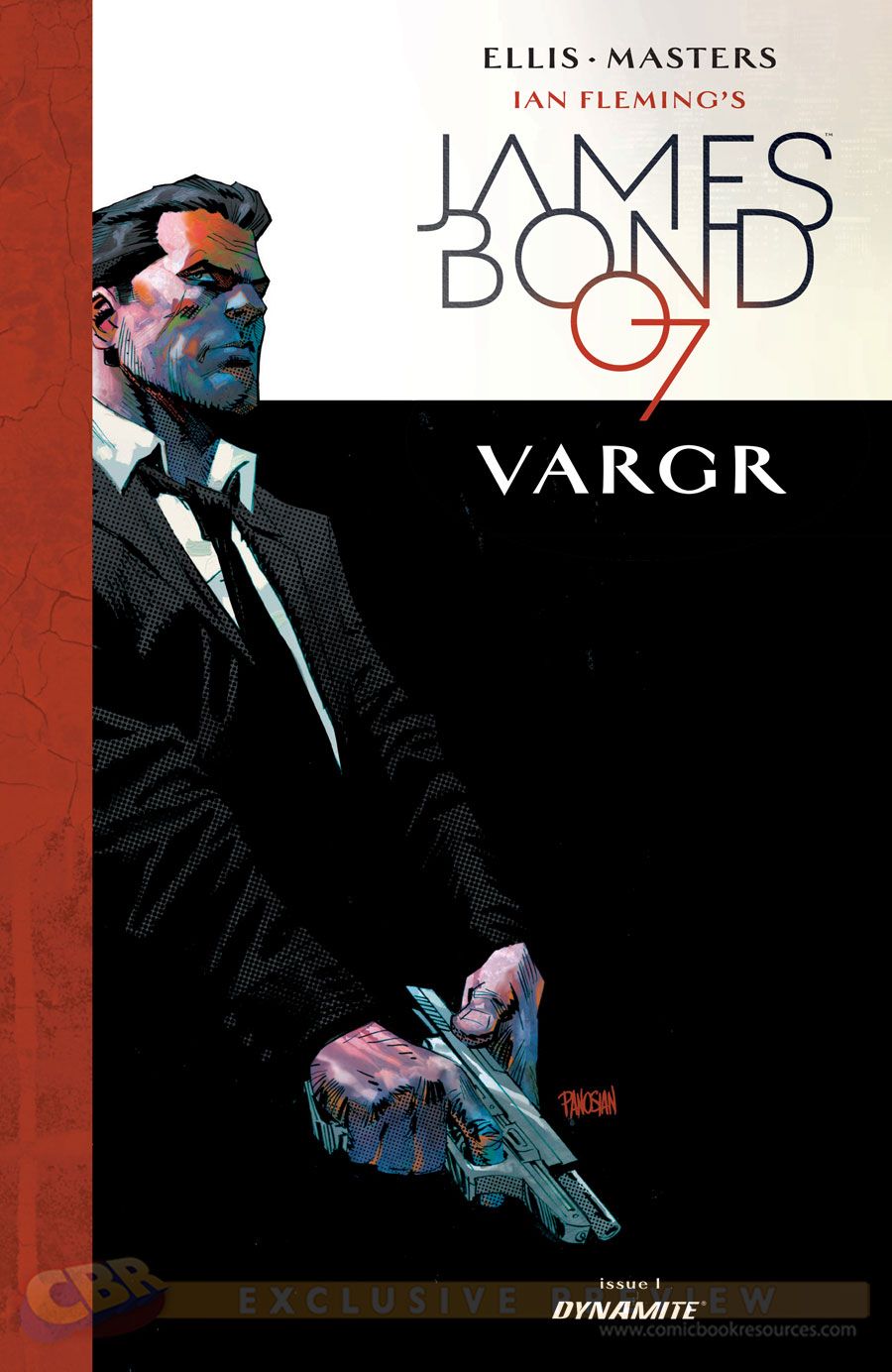Just over a year ago, Dynamite Entertainment announced that it had signed the rights to create new James Bond comics. Earlier this year, the publisher followed up with word that it had signed the creative team of Warren Ellis and Jason Masters to craft the new tales starring the super spy. Quite rightly, both announcements caught a large amount of attention, as 007 has been AWOL from the field of comics for quite a while, and any time Ellis is involved in a new series, the writer's fanbase buzzes with anticipation. But still, the question remained: what can fans expect from the upcoming series?
Over the last few months, fans have been able to assemble together a dossier of sorts on the new series. The most clear piece of information about the series is that Ellis and Masters are opening their run with a new six-issue storyline rather than adapting a novel. Titled "VARGR," the elegantly-suited protagonist of the Ian Fleming stories will race headfirst at a new, twisted enemy. Beyond that, though, details about the comic have been locked down tighter than security at a secret volcanic lair.
EXCLUSIVE: Warren Ellis Brings "Genius Storytelling" to Dynamite's "James Bond 007"
With the first issue slated to arrive in November, CBR News spoke with Ellis about how and why he came onboard for this new series, and what we can all expect from his take on James Bond, 007.
CBR News: What was your general take on the character -- books, film, everything he's been and become -- before you took on this project?
Warren Ellis: Well, Bond is one of the great British icons, of course. Once I'd established that I could work with the Ian Fleming estate, it was really very difficult to turn down. In cinema, of course, the Bond pictures invented whole chunks of film language -- I was on BBC Radio 5 yesterday, explaining that I couldn't resist doing a classic Bond-movie cold open. And Bond has a very long history in comics, with the novels being adapted early on into daily newspaper comic strips. Bond is one of those big things in British culture that you just kind of have to do if it is somehow offered to you.
The Bond of the books, which is the Bond of this comics series, is a brutal piece of work. What's intriguing to you about this version of the character, as opposed to the more famous on-screen interpretations?
I've always been more interested in the Bond of the books, fascinated by the ways in which Fleming showed the toll the job took on the man, and the man himself: a little dull, a lot cruel, not quite fitting in the world, living on a high wire. He has all the vices that the film Bond is no longer allowed, and none of the gimmicks and showy quirks that defines the film Bond. The "real" Bond becomes more different the deeper you go into the details -- Fleming lived in the details, relished them.
He's a bourbon drinker, for instance -- he doesn't drink the Vesper after "Casino Royale," for what I would think were absurdly obvious reasons. His dress sense is different. His reluctance, and his mental and physical scar tissue, is palpable on the page. He is just so much richer. And substantially more evil.
There are key components to the Bond of the novels which are now somewhat outdated (he's not particularly a feminist, for one thing). Since the story takes place in the present day, how have you contemporized the world of the literary Bond?
I started with the details, because, as I say, Fleming himself put so much energy into them. Built him out from the clothes on his back -- short-sleeved shirts may have been maverick in 1962, I don't know, but Bond sure as hell wouldn't wear them under a suit today. He'd still buy them from Turnbull & Asser, mind. He lives and works in more diverse environments. Yes, the Bond of the books was casually sexist, racist, homophobic and a dozen other unpleasant things, including, let's not forget, a murderer.
In my Bond story, he is clearly a man who respects competent colleagues regardless of any other value, because, yes, it's the 21st Century -- but I would also suggest that someone can be a misanthrope without being a bigot. And Bond is probably not hugely charmed by human life in general.
With a franchise that has spent so little real time within comics and so much onscreen, how do you find the concept translates into the medium? In novels, we're always in his head, visualizing the world as he sees it. In movies, we never get to really see what's in his head. How compatible are comics and James Bond?
Bond's been in comics in this country since 1958 -- the newspaper strip ran for something like 25 years. James Bond was in comics before he was in films -- "Dr No." didn't happen until 1962. But, you know, this is a thing comics does -- mixes art forms to the extent that we can, if we choose, see the interior life as well as the exterior. You know this, we all know this.
You asked that artist Jason Masters join you for the series. What was it that appealed to you most about his artistic sensibility?
Jason is great at the setting, for one thing: architecture, landscape, streets. He makes a world real. He's also an incredibly ambitious artist, always up for trying something new, finding a different way into things. And I love that spare line of his, and the way he gets subtle performances from his characters with it. Best of all, and thankfully, he loves the details as much as I do, which is crucial for this -- we don't have the pages and pages where Fleming dug deeply into the fine notes of things.
Fleming always wrote two major drafts of his books -- one to lay down the story, and one to add all the details. Jason is therefore a full, and the most important, author of half the work -- his eye is what makes it the Fleming Bond. All I can do is days of research to confirm the cut of his suit or the source of his shirts and shoes and which cigarettes he'd be smoking in a 2015 where the bespoke tobacconists are all but gone.
How did you approach shaping Bond's mission in the initial arc, "VARGR?" Is he facing a personal, or more global threat?
The Fleming Bond threats were often both, in that he is often given a personal reason to get or stay involved with a case. So we do a little bit of that, to enforce that this is the Fleming Bond. But the threat is specifically to mainland Britain -- because, of course, on some level all these stories are about Britain and its place in the world. It also, a little, involves drugs, which is not a story premise Fleming himself did a lot with. Remember, he wrote the final full novel in 1964, very much before serious drug-related crime became a dominant theme in the Western world. So -- and I don't think I'm the first Bond writer to do this, at all -- it was interesting to me to push there a little bit.
But it's a Fleming Bond book, and there are things you have to do to attain something of that tone, and those are the things that shape the story. Can't have a Bond story without a somehow scarred or deformed villain, for example -- it's fascinating to me how Fleming physically marked Bond's adversaries. I'm greatly enjoying the form, its constraints and opportunities.
Also, it's made me seriously want to get a new suit made, as my last tailored suit is too big for me now and I miss the Saville Row shot silk. I've always loved a good suit, but Bond research has been feeding my base materialism terribly. If only I could get those cigarettes made, with the three gold rings above the filter...
Warren Ellis and Jason Masters' "James Bond" arrives in November.

